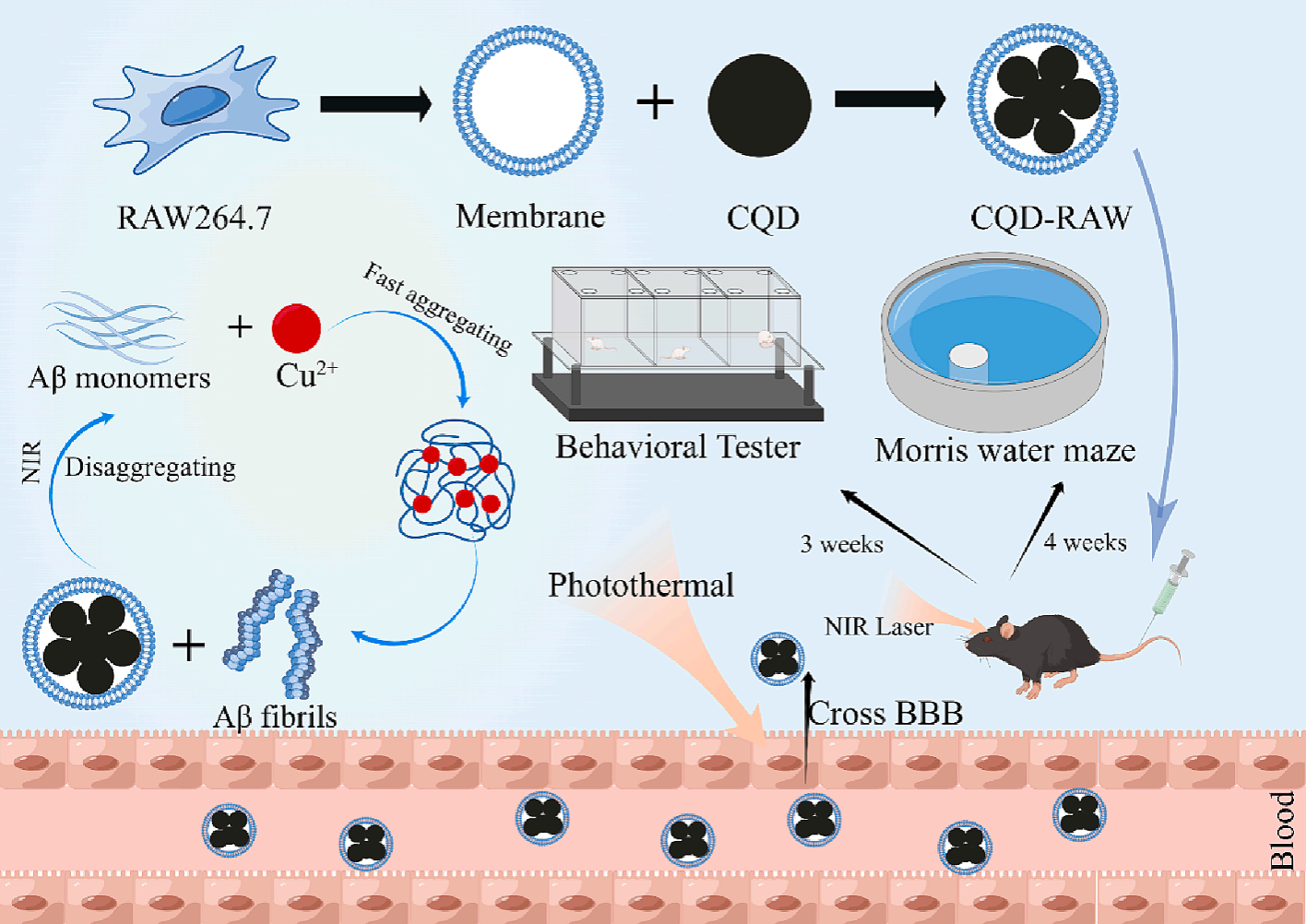Recently, a paper titled "Macrophage membrane-encapsulated nitrogen-doped carbon quantum dot nanosystem for targeted treatment of Alzheimer's disease: Regulating metal ion homeostasis and photothermal removal of β-amyloid" has been published in the top journal (Journal of Colloid and Interface Science) by the team of Associate Professor Meng Xie, School of Pharmacy, Jiangsu University (https://authors.elsevier.com/a/1hU8f4-sDbHyH).

Figure 1. The preparation flow chart of CQD-RAW and the schematic diagram of the CQD-RAW nanosystem for the combined treatment of AD.
Alzheimer's disease (AD) is a common neurodegenerative disease in the elderly and the most common cause of dementia. Its main pathological feature is the formation of extracellular senile plaques and intracellular neuroprogenitor fiber tangles, in which neurotoxicity from β-amyloid (Aβ) deposition causes synaptic dysfunction and neuronal death. Therefore, inhibition of Aβ aggregation is one of the important ways to prevent and treat AD.
Photothermal therapy (PTT) is a novel, non-invasive treatment that uses a light absorber to convert laser energy into heat, thereby increasing local temperature and eliminating Aβ protofibrils. Metal ion imbalance promotes aggregation of Aβ fibers. Therefore, PTT and metal ion chelation were combined to improve the overall treatment of AD.
In this thesis, macrophage membranes were wrapped around CQD and constructed a macrophage membrane-encapsulated CQD (CQD-RAW) nanosystem to enable immune evasion and inflammation targeting. NIR radiation was used to open the blood-brain barrier to further increase the accumulation of the nanocomposites in the brain and treat AD by chelating excess Cu2+ while photothermally eliminating Aβ protofibrils. The in vivo efficacy of the synergistic treatment was evaluated using APP/PS1 mice, and the results showed that the nanocomposites were effective in reducing Aβ deposition in the brain, attenuating neuroinflammation, and significantly ameliorating the learning and memory deficits of the mice. The multi-targeted synergistic nanosystems designed in this study have great potential in the treatment of Alzheimer's disease and provide a new avenue for the future application of nanotechnology in Alzheimer's disease.
This work was supported by the Natural Science Foundation of Jiangsu Province (Project No. BK20201419) and the China Postdoctoral Foundation (2021M701502).